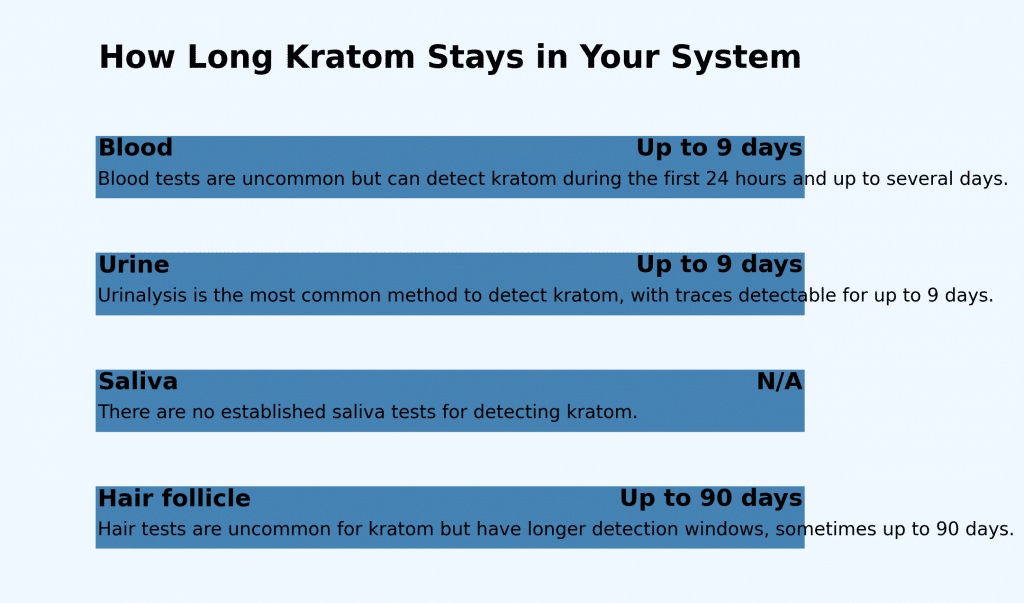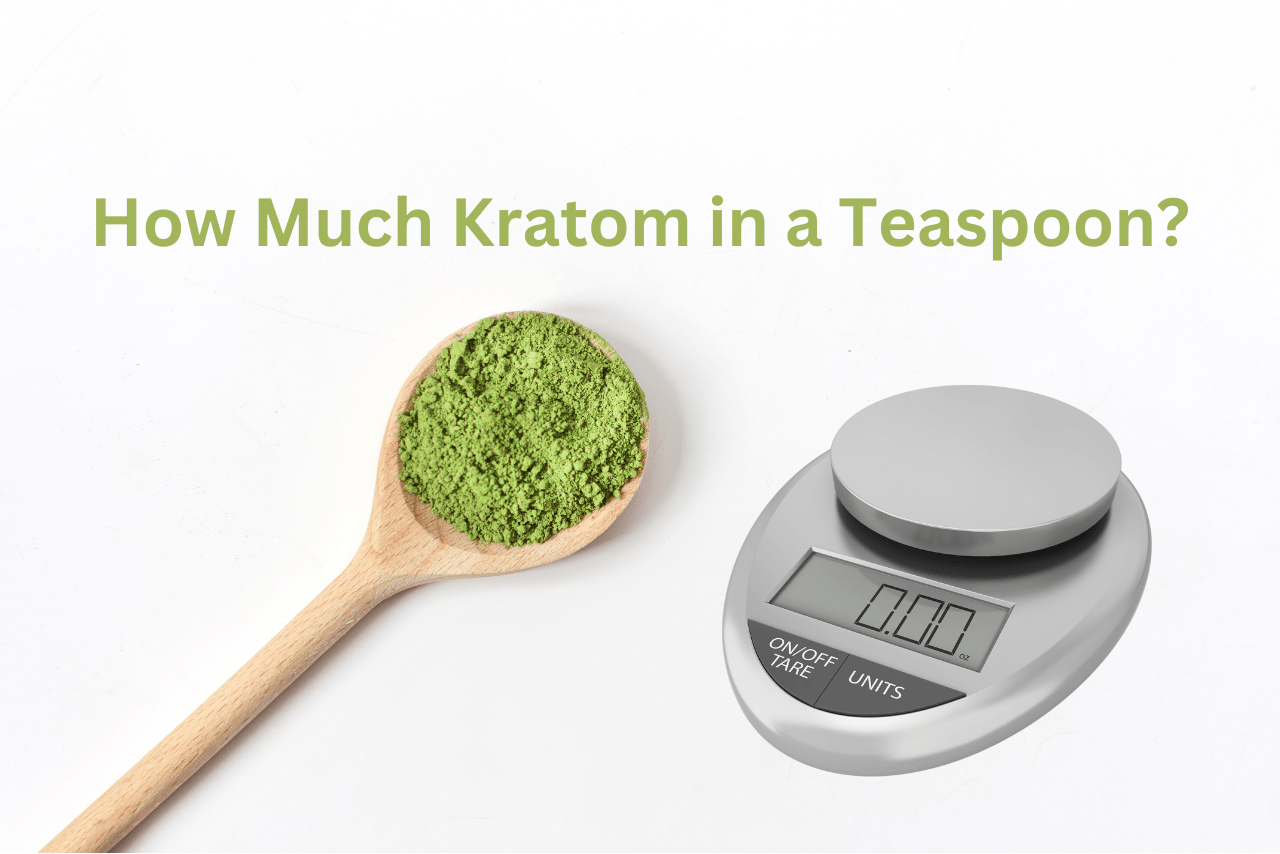Contents
Does Kratom Show Up on a Drug Test?
- Written by David
- Updated on April 23, 2025
- Published on
- Kratom Legal Status
TL;DR
Kratom, derived from the leaves of the Mitragyna speciosa tree, is gaining attention for its stimulating and sedative effects, depending on the dosage. However, many users are concerned about whether kratom will show up on drug tests. While research on human metabolism of kratom is limited, it is generally believed that kratom can remain detectable in your system for 6 to 9 days, with factors such as dosage, method of consumption, and individual metabolism influencing this timeframe. Urinalysis is the most common method for detection, with blood tests also possible but less frequent. Users should be aware that kratom can lead to side effects and potential addiction, making it essential to understand its risks. If you’re considering using kratom, knowing how it metabolizes and its detection window can help you make informed decisions. For more insights on kratom’s effects and safe usage, explore our comprehensive guide.
Kratom (Mitragyna speciosa) is a tropical tree whose leaves are known for being stimulating, pain relieving and relaxing. At lower doses kratom is a stimulant, increases energy, at higher doses it’s sedative.
Despite its growing popularity kratom’s effects and elimination times have not been studied thoroughly. Most research has been done on animals, with only a few human studies since 2015. Kratom’s half life is around 24 hours but can go up to 40 hours. So it’s generally believed that kratom can be out of your system in 6-9 days.
Determining Factors
Several things can affect how long kratom is in your system:
Dosage and Method of Administration
Higher doses of kratom means longer duration of effects and detection window. Kratom taken orally as a tea or pill is longer retention than smoking which is less common.
Type of Leaves
Different types of kratom leaves have different effects. Green leaves gives mild energy boost for over 8 hours. Red leaves can be stimulating or sedating. White leaves are highly stimulating and mood enhancer for several hours.
Weight and Age
Older people have slower metabolism and takes longer to process kratom. Also kratom is fat soluble so people with higher body fat may retain it longer than those with leaner body.
Diet
Taking kratom on an empty stomach may have shorter detection window than taking it with high fat meal. Drinking more water can help expedite the elimination of kratom’s active compounds.

How Is Kratom Metabolized?
The main active alkaloid in kratom, mitragynine is an opioid agonist, it interacts with opioid receptors similar to opiates. This has led to debates whether kratom should be classified as an opioid. Mitragynine is absorbed through the gastrointestinal tract, peak plasma concentration is reached within an hour. It’s then metabolized by the liver into byproducts called metabolites. Urine pH can affect the elimination of these metabolites, highly acidic environment can destroy them.
Kratom & Drug Testing
Blood Tests
Blood tests for kratom is rare but can detect it within 24 hours and up to several days.
Hair Tests
Hair follicle tests is rare for kratom detection but can detect it up to 90 days.
Urinalysis
Urinalysis is the most common method for detecting kratom. Urine test can detect kratom within 6 hours of ingestion, traces may be detectable up to 9 days.
Kratom Abuse and Addiction
Not studied thoroughly but kratom extracts are considered to have potential for abuse due to its psychoactive effects. Tolerance can develop quickly and may lead to addiction. Kratom is being marketed as a cure for chronic pain and a tool to alleviate opioid withdrawal symptoms by interacting with the same brain receptors as painkillers. But it’s also linked to side effects, abuse and addiction.
Side Effects of Kratom
Common side effects of kratom are nausea, vomiting, itching, constipation, increased urination, rapid heart rate, loss of appetite, seizures and hallucinations.
Kratom is a complex substance with many effects and detection times affected by many factors. Knowing these variables is important for those who use kratom and need to know when it will show up on drug tests and its risks and side effects.
Dosing Matters
Dosing kratom properly is key to get the most out of it and minimize the risks. Users should start with low dose to see how their body reacts and adjust as needed. Knowing and respecting the dose can help avoid unwanted side effects and have a good experience with kratom.
Read more about kratom




